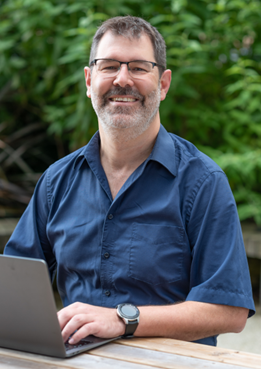WMS Events Calendar
Please see this page for MB ChB events.
BMS Seminar: Challenging Spemann’s idea: Cytoneme-mediated transport of active Wnt5b/Ror2 complexes, Professor Steffen Scholpp FRSB, Living System Institute, School of Biosciences, University of Exeter
Abstract: Chemical signalling is the primary means by which cells communicate in the embryo. Precisely 100 years ago, Hans Spemann postulated the underlying principle, which refers to a group of ligand-producing cells and a group of cells that respond to this signal because they express the appropriate receptors. Consequently, cells and tissues lacking the receptors are considered non-responsive or blind. The concept still dominates our current thinking that signal activation occurs in responsive cells but not in non-responsive cells, allowing for precise tissue specification, organ development, and formation of the entire embryonic body.
In the zebrafish embryo, Wnt5b binds to the receptor Ror2 to trigger the Wnt/Planar Cell Polarity (Wnt/PCP) signalling pathway to regulate tissue polarity and cell migration. However, it is still unclear how this lipophilic ligand is transported from the source cells through the aqueous extracellular space to the target tissue. Here, we show that Wnt5b is loaded on long signalling filopodia, also known as cytonemes. Surprisingly, we also find that the vital co-receptor Ror2 is localised to the same cytonemes. The active Wnt5b/Ror2 complexes are formed in the producing cell and handed over from these cytonemes to the receiving cell. Then, the receiving cell activates Wnt/PCP signalling, regardless of whether the cell expresses functional receptors. On the tissue level, we further show that cytoneme-dependent spreading of active Wnt5b/Ror2 affects convergence and extension in the zebrafish gastrula. In parallel, we find that precisely the same mechanism operates in human gastric cancer tumours, allowing cancer-associated fibroblasts to influence the behaviour of gastric cancer cells.
We suggest that cytoneme-mediated transfer of ligand-receptor complexes is a vital mechanism for paracrine signalling and thus challenges the long-standing concept of characterising responsive and non-responsive tissues based solely on the expression of the receptors.
 Biography: Steffen Scholpp is a Professor of Cell and Developmental Biology at the Living Systems Institute, University of Exeter, studying intercellular communication in zebrafish embryos and human organoids. He focuses on cell-biological mechanisms regulating the distribution and function of signalling molecules in developing tissues. By using fluorescently tagged Wnt ligands, he was able to describe for the first time the dynamic spreading of Wnt signalling on filopodia between cells in real time. Based on these findings, he investigates the underlying molecular mechanism of the emergence of these Wnt8a cytonemes in zebrafish. He further explores the function of Wnt cytonemes in gastric cancer and shows that cytonemes transport Wnt3 between cancer cells. Recently, his team showed that cytoneme can disseminate fully assembled and active Wnt5/Ror2 complexes to regulate Wnt/PCP signalling in the target cells in zebrafish and gastric cancer. Cytoneme-based transport of signalling proteins is now considered so fundamental that SS's work now appears in a dedicated chapter in Scott Gilbert's textbook 'Developmental Biology'. His team has considerable experience in in vivo super-resolution imaging. He collaborates with the microscopy company Leica MS to adapt new quantitative imaging technologies and AstraZeneca to establish precise genome editing in zebrafish. In conclusion, he has over 20 years of experience analysing morphogen signalling with over 50 publications, h-index 33, and over 4,200 citations.
Biography: Steffen Scholpp is a Professor of Cell and Developmental Biology at the Living Systems Institute, University of Exeter, studying intercellular communication in zebrafish embryos and human organoids. He focuses on cell-biological mechanisms regulating the distribution and function of signalling molecules in developing tissues. By using fluorescently tagged Wnt ligands, he was able to describe for the first time the dynamic spreading of Wnt signalling on filopodia between cells in real time. Based on these findings, he investigates the underlying molecular mechanism of the emergence of these Wnt8a cytonemes in zebrafish. He further explores the function of Wnt cytonemes in gastric cancer and shows that cytonemes transport Wnt3 between cancer cells. Recently, his team showed that cytoneme can disseminate fully assembled and active Wnt5/Ror2 complexes to regulate Wnt/PCP signalling in the target cells in zebrafish and gastric cancer. Cytoneme-based transport of signalling proteins is now considered so fundamental that SS's work now appears in a dedicated chapter in Scott Gilbert's textbook 'Developmental Biology'. His team has considerable experience in in vivo super-resolution imaging. He collaborates with the microscopy company Leica MS to adapt new quantitative imaging technologies and AstraZeneca to establish precise genome editing in zebrafish. In conclusion, he has over 20 years of experience analysing morphogen signalling with over 50 publications, h-index 33, and over 4,200 citations.
